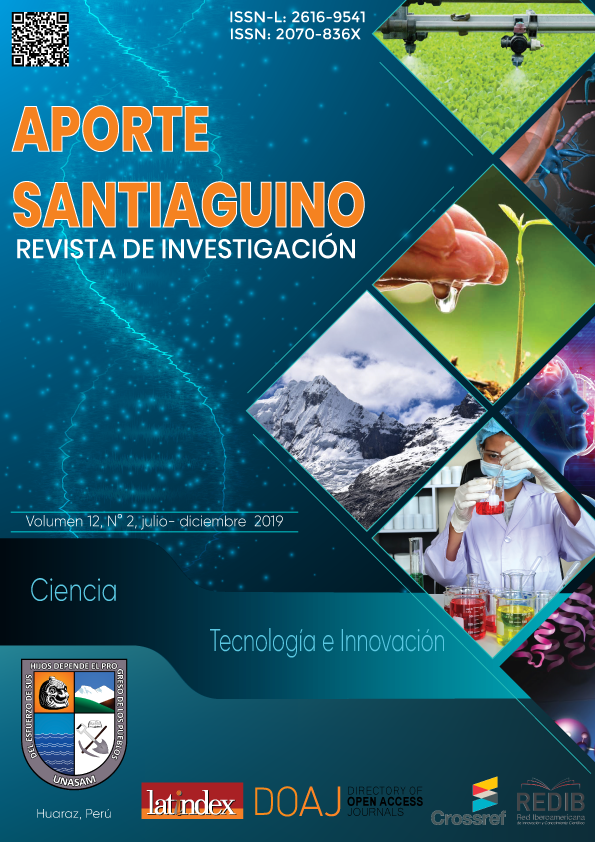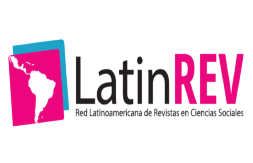Flood risk modeling due to the ocurrence of maximum discharges from the Santa river, Challhua sector, Huaraz-Ancash
DOI:
https://doi.org/10.32911/as.2019.v12.n2.643Keywords:
flood, maximum flow, danger, vulnerability, riskAbstract
The objective is to identify the areas exposed to risk by flood due to the occurrence of maximum discharges of river Santa in the sector of Challhua, Huaraz. Through the probabilistic method of Gumbel, it was determined the base flow and the maximum flow of the studied area for dierent return periods (5, 10, 50, 100 y 200 years). Besides, the levels of water and the flood areas were determined through the programs HecRAS and HecGeoRAS, whose results ranged between 371,49 square meters for the base flow and 1927,08 square meters for a return period of 200 years. In addition, it was determined that 91 houses and 18 market modules present very high vulnerability, 91 houses and 20 market modules high vulnerability, 94 houses medium vulnerability and 91 houses low vulnerability. The overlap of the flood areas and the vulnerability map determined the risk, finding that the 8,2 % of houses and the 47,4 % of market modules are in very high risk, the 41,1 % of houses, the 52,6 % of market modules and the 100 % of sportif infrastructure are in high risk, while the 25,6 % of houses are in medium risk and the 24,8 % of houses in low risk
Downloads
References
Bahadur, I.; Sonkar, V. K.; Kumar, S.; Dixit, J. y Singh, A. P. 2015. «Crop residue management for improving soil quality & crop productivity in India». Indian Journal of Agriculture and Allied Sciences 1(1): 52 - 58.
Ciro, P.; Holguín, M. y Álvarez, L. 2014.Manual de Buenas Prácticas Agrícolas en cultivos de cítricos en el Suroeste antioqueño. CITRICAUCA, Antioquia, CO. 154 pp.
Cisneros, F. 1995. Control de Plagas Agrícolas. Segunda Edición. Capítulo 8: Control Biológico, p. 102 - 147. Full Print s.r.l., LaMolina, Lima-PE.
Collantes, R. y Rodríguez, A. 2015a. «Diversidad de avispas parasitoides (Hymenoptera) en agroecosistemas de palto (Persea americana Mill.) y mandarina (Citrus spp.) en Cañete, Lima, Perú». Aporte Santiaguino 8(2): 207 - 218.
Collantes, R. y Rodríguez, A. 2015b. «Sustentabilidad de agroecosistemas de palto (Persea americana Mill.) y mandarina (Citrus spp.) en Cañete, Lima-Perú».Tecnol.desarro 13(1): 27-34.
Collantes, R.; Rodríguez, A. y Canto, M. 2015. «Caracterización de fincas productoras de palto (Persea americana Mill.) y mandarina (Citrus spp.), en Cañete, Lima, Perú». Aporte Santiaguino 8(1): 33 - 44.
Collantes, R.; Perla, D.; Rodríguez, A.; Beyer, A. y Altamirano, J. 2016. Acacia horrida (L.) Willd.: Refugio de artrópodos benéficos en la costa peruana. Saber y Hacer 3(1): 37 - 47.
FAO (Organización de las Naciones Unidas para la Alimentación y la Agricultura, IT). 1997. Zonificación agro-ecológica: Guía general. Boletín de Suelos de la FAO 73, Roma. 98 pp.
Julca, A.; Rodríguez, P.;Meneses, L.; Blas, R.; Bello, S.; Anahul, J.; Crespo, R.; Castañeda, E.; Reynoso, A.; Schuller, S.; Fundes, G. y Santibañez, R. 2006. Selección de fuentes naturales para la fertilización de café en el marco de una agricultura orgánica. Línea base de Proyecto financiado por INCAGRO, en alianza con la UNALM, la FDA, la JNC y el INIEA. 53p.
León-Velarde, C. y Quiroz, R. 1994. Análisis de sistemas agropecuarios: uso de métodos biomatemáticos. CIRNMA- CONDESAN. Puno, Perú. 238 pp.
Obi, F.O.; Ugwuishiwu, B.O. yNwakaire, J. N. 2016. «Agriculturalwaste concept, generation, utilization and management». Nigerian Journal of Technology 35(4): 957 - 964.
Saravia-Matus, S. y Aguirre, P. 2019. Lo rural y el Desarrollo Sostenible en ALC. 2030-Alimentación, agricultura y desarrollo rural en ALC, No. 3. FAO, CL. 20 p.
SENASA (Servicio Nacional de Sanidad Agraria, PE). 2014. Todo sobre las moscas de la fruta. 22 pp.
Ureña, J. 2009.Manual de Buenas Prácticas Agrícolas en el Cultivo de Aguacate: Para miembros del Centro Agrícola Cantonal de Tarrazú. 52 pp.




















